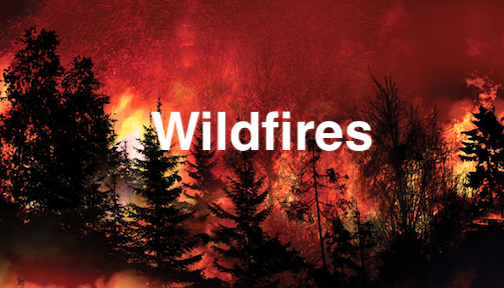
BY ELAINE GOODMAN
Daily Post Correspondent
The Woodside Fire Protection District might soon require property owners to clear plants from parts of their property to help protect their neighbor’s home from wildfire danger – a proposal the Woodside Town Council will discuss tomorrow.
The fire district is proposing a new ordinance regarding “defensible space,” a technique in which trees, bushes and other vegetation are removed or thinned to create a buffer around a building to slow the spread of a wildfire.
The district’s proposal would require 100 feet of defensible space around homes – even if some of that space is on a neighbor’s land. In that case, the neighbor would be required to create part of the defensible space for the adjoining home. The owner of the property needing defensible space would pay half the cost.
The proposal is sparking concern among residents of the district, which covers Woodside, Portola Valley, Ladera, Emerald Hills and nearby areas.
Ladera resident Daniel Warren said the ordinance would force residents to remove plants on their land, potentially decreasing property values, to protect their neighbors.
“It seems like you’re taking something away from one property due to the actions of their neighbors, and will generate endless conflict between neighbors and with the district,” Warren said during a fire district board meeting on Feb. 27.
Portola Valley councilman Craig Taylor told the board that the ordinance could end up “pitting neighbor against neighbor.”
“It’s using the district’s authority to compel neighbors to take on an unknown, potentially significant cost based on conditions that are outside their control,” Taylor said.
Taylor asked the board to hold off on the requirement to provide defensible space for neighbors’ homes until after the district conducts a round of property inspections. That way the district will better understand the fire risk to properties, he said, and residents will better understand the requirements.
Board president Matt Miller said the district would be taking a phased approach to defensible space, starting with education rather than citations.
“They’re not going to be storm troopers descending on your property, tagging trees,” Miller said.
But Warren, the Ladera resident, said the phased approach Miller described was not spelled out in the ordinance. Residents are worried that getting an inspection will start the clock ticking toward a compliance deadline and potential citations, he said.
“If what you’re saying is what was written, we would be encouraging everybody to get their inspections,” Warren said.
The latest version of the proposed ordinance acknowledges compliance will require “much time, energy and resources, especially on large properties.”
It says that property owners won’t be cited if they can show evidence of “substantial progress toward compliance” within the past year.
And property owners can apply for phased compliance, which would give them up to three years to comply, if they can show they have a financial hardship or are facing challenges such as erosion.
The board voted to give initial approval to the ordinance on Feb. 27. Miller noted there’s still time to make changes to it before final approval.
The fire district can enact the ordinance without approval from the towns of Woodside or Portola Valley. Tomorrow’s Woodside council meeting will give residents another chance to ask questions about the ordinance and comment on it.
The district’s fire marshal previously met with the community about the proposed ordinance, including a workshop with the Portola Valley Wildfire Preparedness Committee and a Ladera community meeting.
Concerns about a property owners’ responsibility for a neighbor’s defensible space are magnified by a state law allowing accessory dwelling units, commonly called granny or in-law units, to be built within four feet of a side or rear property line. Granny units so close to the property line would shift much of the 100-foot defensible space burden to neighbors.
Another concern for residents is that the ordinance would apply throughout the district, and not just to properties considered to be at high risk from wildfire.
Miller, the board president, said a district-wide approach to vegetation management is needed to stop a rapidly moving wildfire.
